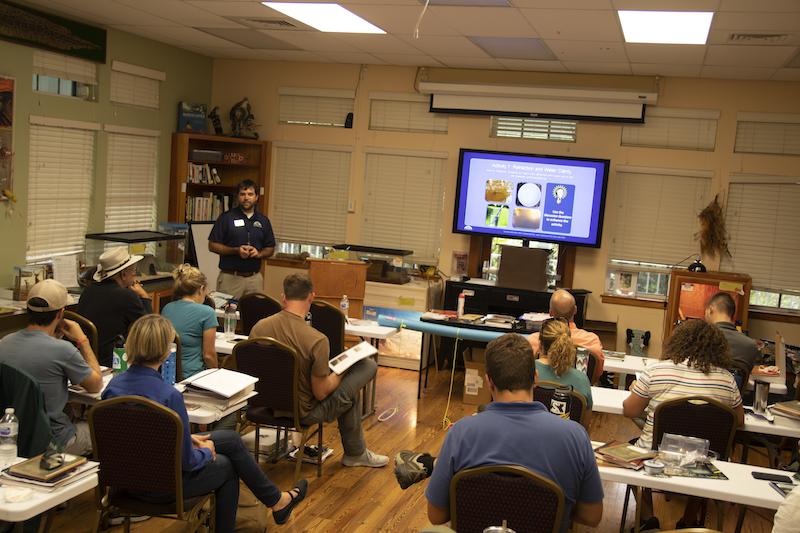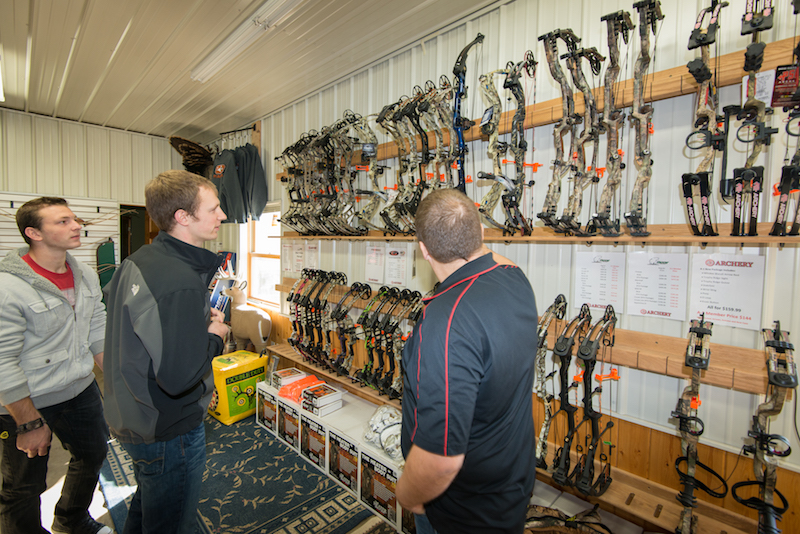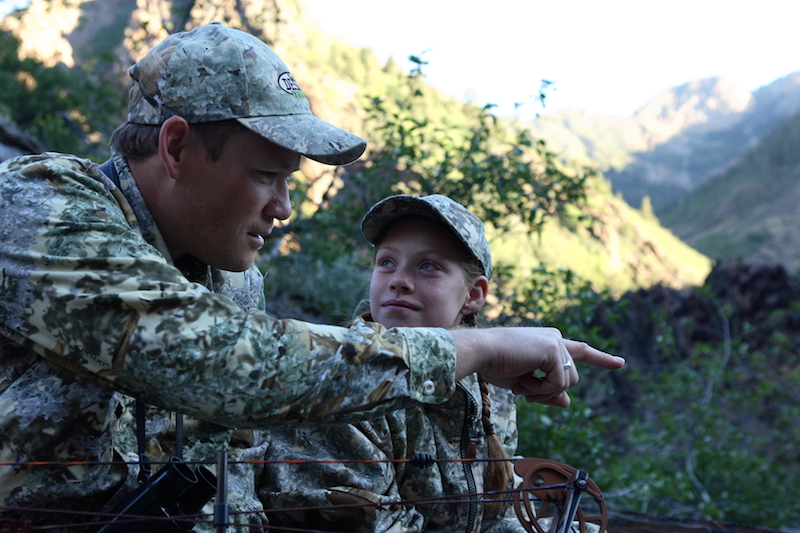Are you interested in bowhunting? It’s a great way to spend time outdoors and provide organic meat for your family. Bowhunters enjoy close wildlife encounters and quiet time alone. If that appeals to you, give bowhunting a shot!
To begin your journey, follow this road map to becoming a bowhunter. The links throughout this article provide more resources and in-depth information.

Bowhunting education courses are where you’re going to get vital information about safety. Photo credit: ATA
Completing a driver’s education course is a rite of passage for drivers. It teaches the rules of the road and basic operating instructions. It helps graduates feel confident getting behind the wheel. Bowhunter educationis much the same, giving you the confidence to enter the woods safely and skillfully. The course teaches basic hunting safety, shot placement, and bowhunting tactics and equipment.
Even if you’re already a hunter, bowhunter education courses cover bowhunting-specific topics. The National Bowhunter Education Foundationis the program’s certifying organization. Courses are available nationwide and in 27 countries. In fact, 11 states require an International Bowhunter Education Program certificate to bowhunt.
You can find a nearby course through the NBEF website. Courses are also available online.
Before heading afield, review the rules for areas you hunt. State wildlife agencies provide this information on paper and online. Nearby archery shopswill also likely have copies of hunting regulations.
Review which game is legal, as well as season dates, shooting hours and equipment requirements. If you have questions, call the wildlife agency’s help line.
Bowhunting’s technical terminology helps you understand your equipment and connects you with other bowhunters. Review “Bowhunting Encyclopedia: Know Your Terms” to learn how to speak the language.

Get sized for a bow at your local archery shop. Photo credit: ATA
Bowhunters need a few basicslike a bow, release, arrows and broadheads. A nearby bow shopis the best place to buy gear. Experts will happily help you find equipment that fits your needs.
For an in-depth look at what you need to get started, read“Bowhunting Beginner? We Have The Gear for You.”
The right fit is vital when buying gear. Even experienced bowhunters work with bow technicians when buying equipment. If you’re new to archery, first determine your eye dominance and draw length. Don’t be afraid to shoot several bows at a local dealer’s store before choosing the right one. Experts will then help set your draw weight.
If you choose a compound bow you’ll need a release-aid to draw and release the bowstring. It’s important that the release-aid fits you. When shopping for a release, bring your bow and shoot several releases while a bow technician explains your options.
Determining the right arrow and broadhead setup can seem intimidating. Arrows must be cut to fit your draw length, and you must consider several factors like weights and materials. Tell the shop’s experts what you plan to hunt, and they’ll find the right arrow for your setup and quarry.
Next, pick the right broadhead. The general styles are fixed, mechanical, and small-game blunts and judos. To learn more about broadheads and what fits your needs read “Broadheads 101: Gear Up for Bowhunting!”
You’re all geared up and it’s time to push your practice into overdrive. If you’re new to archery that means mastering proper form. Talk to your archery pro about lessons with a certified instructor.
Practice shooting for bowhunting conditions. That means shooting from elevated positions if you plan to hunt from treestands. Shoot from kneeling and contorted positions if you’ll be doing the spot-and-stalk approach. Work on judging distances and identifying ethical shots.
Too bad you can’t ask Siri about bowhunting hotspots, but you’ll find other options for charting a course. Public lands that offer hunting opportunities include state and national forests, national wildlife refuges, wildlife-management areas, Bureau of Land Management properties, and heritage preserves and other trust programs.
Topographical maps are great resources for scouting public grounds. Consider these helpful tips for reading maps. For more tips on finding hunting lands read “How to Find Great Places to Hunt.”
To hunt private land you need the landowner’s permission. The article “Ask Permission to Bowhunt Private Property in 4 Easy Steps” outlines how to present yourself as a respectful, responsible bowhunter. Get the landowner’s permission in writing, even if your state doesn’t require it.
Boots-on-the-ground scouting is a great way to find good hunting spots in the offseason. When scouting potential areas, look for wildlife sign like beds, scat, rubs, tracks, scrapes, and water and food sources.
Don’t start without a hunting license. You must buy a license every year in every state you hunt. You can buy most licenses online or in person from wildlife agencies. Prices vary by state, and expect to pay more than residents if you’re a nonresident. Bowhunting some species requires special-draw tags, which usually have quotas and application deadlines. Once you buy your license, sign it and carry it with you at all times when bowhunting.

Hunting with a partner is the best way to learn the ropes firsthand. Photo Credit: ATA
Hunting with a partner is the best way to learn skills like finding, stalking and tracking game. It’s also safer and makes field dressing and packing meat easier. Nearby archery shops are great places to connect with bowhunters. Check to see if you live near a bowhunting club. Before going out with someone, read “How to Get Invited Back to Hunt.”
One often-intimidating task for new bowhunters is field dressing their kill, which means removing its organs to quickly cool the animal to ensure its meat doesn’t spoil. If you’ve never done this before, bring instructions and take your time. It’s your responsibility to care for the meat and get it into your freezer to avoid spoilage.
To learn field-dressing techniques, watch and learn from an experienced hunter. But sometimes you must go for it to learn. Study these helpful articles to take your meat from field to fork:
“Pep Talk: Yes, YOU can Field Dress a Deer!”
“Video: Field Dressing a Deer with Steven Rinella”
Once the hard part is over, the fun begins. Bowhunting360.com’s “wild meat” section is loaded with mouth-watering recipes.
Questions will arise when beginning your bowhunting journey, but you’ll find plenty of resources to help. Bowhunting360.com is your complete guide to all things bowhunting. You’ll find how-to articles, gear information, and bowhunting tips and tricks. You can also follow us on Facebook and Instagram. Feel free to ask questions! We love helping!
Local archery shops are also great resources because they have insider knowledge about bowhunting your area. Ask questions. They’re in business to help grow bowhunting, and they want to help you succeed.